25 Social Media Platforms Ranked for Brands in 2024
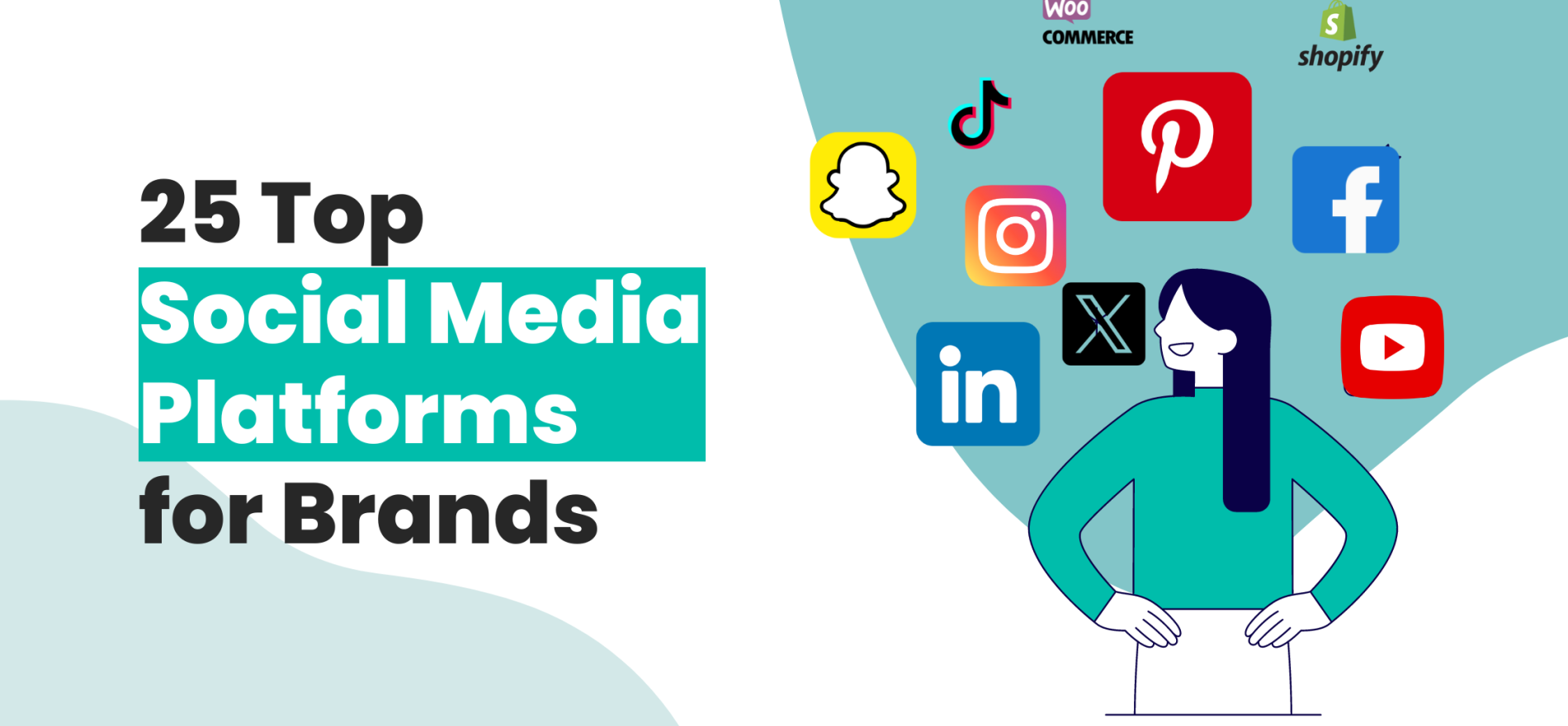
Social media platforms are online applications and tools for sharing visual content in the form of images, videos, and text.
In today’s digital age, social media has become an indispensable tool for businesses of all sizes. Understanding the most widely used social media platforms is beneficial for anyone interested in utilizing social media, be they an experienced marketer, someone just starting out in the field, or a business owner hoping to take advantage of social media’s huge potential.
4.8 billion people use social media globally, accounting for 92.7% of all internet users and 59.9% of the world’s population.
It provides a powerful platform to connect with your target audience, build brand awareness, and achieve your marketing goals.
But with so many social media platforms available, deciding which ones to focus on and how to leverage them effectively can be overwhelming.
Top 10 Social Media Platforms
| S.No | Platforms | Monthly Active Users (MAUs) | Revenue | Headquarters | Launched |
1 | 3,530 million | $120.18 billion | Menlo Park, CA | 2004 | |
2 | 2,000 million | $49.91 billion | Menlo Park, CA | 2010 | |
3 | 2,000 million | $1248 billion | Menlo Park, CA | 2009 | |
4 | YouTube | 2,491 million | $29.24 billion | San Bruno, California | 2005 |
5 | Tik Tok | 1,218 million | $14.7 billion | Culver City, CA | 2016 |
6 | X (Twitter) | 666 million | $4.4 billion | Mountain View, CA | 2003 |
7 | 370 million | $15. 4 billion | San Francisco, CA | 2006 | |
8 | 465 million | $2.8 billion | San Francisco, CA | 2005 | |
9 | Threads | 100 million | $4.6 billion | Menlo Park, CA | 2023 |
10 | Snapchat | 750 million | $4.60 billion | Los Angeles, CA | 2011 |
25 Social media platforms your brand must leverage in 2024
We’ve compiled a list of some of the most popular social media apps and websites worldwide, arranged in no specific order, to assist your business in developing its social media strategy.
1. Facebook

Founders: Mark Zuckerberg, Eduardo Saverin, Dustin Moskovitz, and Chris Hughes
Facebook remains the social media king, boasting the largest and most diverse user base globally, with over 3.05 billion monthly active users as of April 2024.
It allows users to connect with friends and family, share posts, photos, videos, stories, and join groups with similar interests.
Think about utilizing Messenger chatbots for individualized communication, creating or joining specialized groups on Facebook Groups, or utilizing live video to promote audience engagement in real time.
How businesses can use the platform:
Build a strong Facebook Page to be a hub for your brand.
Share informative and engaging content that resonates with your target audience.
Utilize Facebook Groups to foster a community around your brand and interests.
Facebook Ads Manager allows for highly targeted advertising campaigns to reach new customers.
Remember, Facebook thrives on interaction, so respond to comments and messages promptly to build relationships with your audience.
2. Instagram

Founders: Kevin Systrom, Mike Krieger
I
nstagram is a visually-driven social media platform with over 2.04 billion monthly active users.
It’s a fantastic platform for businesses that can showcase their products or services aesthetically. High-quality photos and videos are key to grabbing attention.
The potential return on investment (ROI) for product-based businesses has increased since the introduction of shoppable posts in 2018.
B2B companies can use Instagram’s UI to interact with a large audience as well as easily move followers from product research to purchase by connecting product details and completing purchases.
Additionally, with over 68% of Instagram users under 35, the platform is a goldmine if that’s your target market.
Stories and Reels offer additional features for businesses to share behind-the-scenes glimpses, product tutorials or even host live Q&A sessions.
How businesses can use the platform:
Create a visually appealing Instagram Business Profile.
Utilize high-quality photos and videos to showcase your products or services.
Leverage Instagram Stories and Reels to create engaging content that disappears after 24 hours.
Partner with Instagram influencers who resonate with your brand to reach a wider audience and leverage their credibility.
Remember, Instagram thrives on community engagement, so run contests, reply to comments, and participate in relevant hashtags.
3. WhatsApp

Founders: Jan Koum, Brian Acton
More than just a messaging app, WhatsApp is a powerful customer communication tool with over 2.78 billion monthly active users globally.
It allows users to send text messages, voice notes, photos, videos, and even share their location. Businesses can leverage the WhatsApp Business App or WhatsApp Business API, depending on their needs.
How businesses can use the platform:
Direct Communication: Respond to customer inquiries with a 70% open rate due to the familiarity of the platform, offer personalized support, and send appointment reminders.
Marketing & Sales: Share product catalogs, send promotional updates, offer limited-time deals, and even allow customers to browse products directly in WhatsApp.
Increased Engagement: Run contests and giveaways to spark excitement and boost engagement.
Remember, WhatsApp prioritizes personal interaction, so maintain a friendly and approachable tone in your communication.
4. YouTube

Founders: Chad Hurley, Steve Chen, and Jawed Karim
YouTube is the world’s leading video platform, with over 2.49 billion monthly active users.
It allows users to watch, share, and upload videos of all kinds. It’s a powerful tool for businesses to create brand awareness, educate customers, and showcase their expertise.
To create interesting YouTube videos from your blog entries, use the AI Video Marketing Automator. It’s a quick and simple method of adding relevant data to your channel.
Additionally, the business claims that it’s an extremely effective marketing tool. Compared to other social networks, YouTube viewers indicate they are 4X more likely to utilize the platform to find information about a company, product, or service and 2X more likely to purchase something they saw on the platform.
How businesses can use the platform:
Create a YouTube channel to share explainer videos, product demonstrations, customer testimonials, and brand stories.
Utilize YouTube Ads to target your ideal audience based on demographics and interests.
Learn about YouTube SEO (Search Engine Optimization) to improve your video ranking and organic reach.
Run contests and giveaways to encourage viewers to subscribe and engage with your channel.
5. Tiktok

Founders: Zhang Yiming (ByteDance)
Known for its short-form, viral video trends, dances, challenges, and creative content, TikTok boasts over 1.22 billion monthly active users, particularly popular with a younger demographic.
TikTok has been downloaded over 3.5 billion times worldwide as of 2021, despite attempts to outlaw the program in the United States and India.
Even if TikTok caters to a wide range of customers, connecting with Generation Z should be your first focus as a brand.
While seemingly lighthearted, TikTok offers a unique platform for businesses to showcase their brand personality in an authentic and engaging way, reaching a demographic that might be difficult to connect with elsewhere.
How businesses can use the platform:
Create fun, short videos that creatively showcase your products or services.
Collaborate with relevant TikTok creators, known as TikTokers, to reach a wider audience and leverage their established fanbase. Partnering with the right influencer can significantly boost brand awareness.
Create branded hashtag challenges to encourage user-generated content and boost brand awareness. User-generated content can be a powerful marketing tool, as it builds trust and authenticity with potential customers.
Behind-the-Scenes Glimpses: Offer viewers a peek into your company culture or the production process to build a deeper connection. Transparency and authenticity are valued on TikTok, so don’t be afraid to show the human side of your brand.
Remember, TikTok thrives on authenticity and entertainment value, so keep your content fun, fast-paced, and visually engaging. By understanding these core aspects of each platform and tailoring your approach accordingly, you can harness the power of social media to connect with your target audience, build brand awareness, and ultimately achieve your business goals.
6. X (formerly known as Twitter):

Founders: Jack Dorsey, Noah Glass, Biz Stone, and Evan Williams
Twitter is a microblogging platform where users can post and share messages (limited to 280 characters) called “tweets.” It fosters real-time conversations and news updates through hashtags and trending topics.
With over 436 million monthly active users as of April 2024, Twitter offers a fast-paced and dynamic environment for brands to engage with their audience.
During his tenure as CEO, Musk also shut down several bot accounts, introduced Twitter Blue (now X Premium), a paid monthly subscription service that attached a price tag to verification, and launched a service that pays creators a percentage of the money their subscribers generate.
This could account for the variations in the statistics and data on X’s user base and traffic. Although some reports indicate that X’s traffic is declining year over year, Musk stated in a July tweet that the number of monthly users hit an all-time high in 2023.
Brands have a chance to refine and build their voice on X. It’s possible to be both witty and approachable and still be useful and educational.
Focus: Breaking news, current events, public discourse, and thought leadership.
How businesses can use the platform:
Twitter offers a platform for brands to:
Share real-time updates and announcements (product launches, news, events).
Engage in conversations with customers and industry influencers (respond to mentions, participate in relevant discussions).
Utilize targeted advertising to reach a specific audience based on demographics and interests.
Provide customer support through direct messages (answer questions, address concerns).
Twitter is a great platform to stay connected to your audience in real-time. Share valuable content, engage in conversations, and leverage targeted advertising to build brand awareness.
7. LinkedIn

Founders: Reid Hoffman, Allen Blue, Konstantin Guericke, Eric Lee, and Jean-Luc Vaillant
LinkedIn does not disclose its monthly active user count to the public, in contrast to other social media sites. The team at Social Media Today was able to arrive at “less than 350 million” as a reasonable estimate by taking the percentage of active users in the EU, applying the same trends to global user counts, and accounting for variations in usage. Nevertheless, the company did release MAU counts for its EU users as part of the EU’s new DSA.
LinkedIn is the world’s largest professional networking platform, boasting over 830 million members as of April 2024. Users connect with colleagues, showcase their professional experience, and discover job opportunities.
With more than 180 million members in senior jobs, 63 million decision-makers, and 10 million C-level executives, the platform is a popular place to meet people who can collaborate with your brand, hire your company, or stock your goods.
The site serves as an aspirational hub in addition to being a place for networking. With 61 million users searching for jobs on LinkedIn each week, it’s a wise location to promote your business.
How businesses can use the platform:
Build a company profile and showcase company culture (mission, values, team).
Post job openings and attract qualified candidates with relevant skills and experience.
Share industry insights and thought leadership content (articles, reports, videos).
Network with potential business partners and clients (connect with industry leaders, attend online events).
Establish your brand as a thought leader! LinkedIn is a prime platform to connect with professionals in your industry, showcase your expertise, and attract top talent.
8. Pinterest

Founders: Ben Silbermann, Evan Sharp, Paul Sciarra
Think of Pinterest as a visual search engine that meets mood boards. Users curate collections (“boards”) with inspiring images and videos, from delicious recipes to dream vacation destinations.
It’s a treasure trove of inspiration for users and a goldmine for brands with visually compelling products. 80% of Pinners use the platform to discover new products.
Remarkably, women make up 60% of Pinterest users. It makes sense to devote time on Pinterest social media marketing if the majority of your audience is female.
That’s not to suggest that males don’t use Pinterest; in fact, male and Gen Z pinnerships have increased by 40% in the past year.
Additionally, Pinterest has shown to be an effective marketing tool. 80% of weekly Pinners have found a new product or brand on Pinterest, and eighty percent of Pinners use the platform as inspiration before making a purchase.
How businesses can use the platform:
Don’t just throw random products on Pinterest. Showcase them in a way that ignites users’ imaginations.
Create boards around themes relevant to your audience and use high-quality visuals.
Run targeted ads to reach people actively searching for inspiration related to your niche.
Think of it as a way to get in front of potential customers who are already looking for exactly what you offer, but with a creative twist.
9. Threads
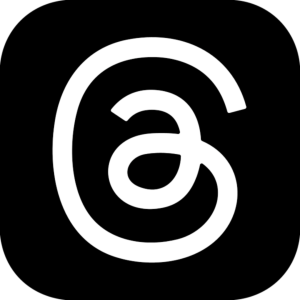
Founders: Meta Platforms (parent company of Facebook, Instagram)
Threads is the new kid on the block, aiming to carve out a space for more intimate social interactions. Unlike the sprawling openness of Facebook, Threads focuses on close friends, allowing you to share quick updates, photos, and videos throughout the day.
Think of it as a digital group chat with a visual twist, perfect for staying connected with your closest circles.
How businesses can use the platform:
While Threads is still finding its footing, here are some creative ways brands can potentially leverage it.
Host exclusive AMAs (Ask Me Anything) or behind-the-scenes content for your most loyal followers, fostering a sense of community and exclusivity.
Partner with relevant micro-influencers who have established connections with smaller, more engaged audiences.
Threads allows for a more personal and conversational approach, where brands can feel less like a corporation and more like a friend in the loop.
10. Snapchat

Founders: Evan Spiegel, Bobby Murphy, Reggie Brown
If Facebook is the yearbook of social media, Snapchat is the crazy house party. It’s known for its disappearing messages (Snaps) – photos and videos that vanish after a set time.
Snapchat is a paradise for user-generated content, behind-the-scenes films, exclusive deals, and influencer takeovers because of its distinctively organic vibe and content that provides an unedited look into ordinary situations.
The site provides users with a sense of anonymity that many other social media platforms do not, and it has always upheld its dedication to real-time, transient information. Because of this, it’s a valuable tool for marketers looking to connect with a younger audience who might not be as interested in the more expansive strategies of other social networks.
This ephemeral nature fosters a sense of urgency and real-time connection, making it perfect for behind-the-scenes glimpses, playful promotions, and fun, interactive experiences with Augmented Reality (AR) filters and lenses.
How businesses can use the platform:
Forget stuffy press releases. Run interactive ad campaigns with fun filters and lenses that people will actually enjoy using.
Offer exclusive discounts or sneak peeks at upcoming products through eye-catching Snapchat stories.
Partner with influencers to create engaging Snaps that showcase your brand in a way that feels authentic and relatable.
11. WeChat
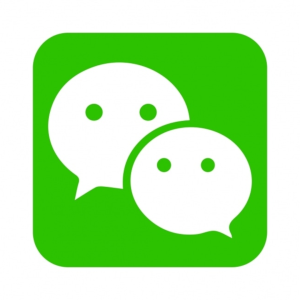
Founders: Zhang Xiaolong (Allen Zhang)
Imagine an app that combines messaging, social media, and mobile payments – that’s WeChat in a nutshell. It’s a giant in China, allowing users to chat, share photos and videos, hail rides, and even pay bills – all within one platform.
For businesses looking to reach the Chinese market, WeChat offers a unique opportunity to connect with users on a deeper level.
How businesses can use the platform:
Create a WeChat Official Account to connect with potential customers.
Share informative content, run targeted ads, and leverage WeChat Pay to facilitate seamless in-app purchases.
12. Telegram

Founders: Nikolai Durov, Pavel Durov
Think of Telegram as a messaging app on steroids. It offers robust encryption, large file sharing capabilities, and group chats that can accommodate thousands of users.
This focus on privacy and large groups makes Telegram popular with specific communities and niche audiences.
How businesses can use the platform:
Create a Telegram channel to share updates, announcements, or exclusive content for your most engaged followers.
Telegram works well for closed groups where you can foster discussions and build a strong community around your brand.
13. Quora
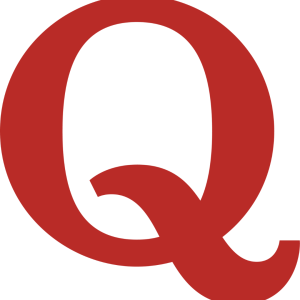
Founders: Adam D’Angelo, Charlie Cheever
Quora is the land of questions and answers. It’s a platform where users can ask questions on any topic imaginable and get answers from experts and everyday people. Businesses can leverage this platform to establish themselves as thought leaders in their industry.
How businesses can use the platform:
Actively participate in industry-related questions.
Provide insightful and helpful answers that showcase your expertise.
This not-so-subtle brand awareness can position you as a trusted source and potentially lead curious users to your website or social media channels.
14. Kuaishou

Founders: Su Hua (宿华) 程一笑 (Cheng Yixiao)
Kuaishou, meaning “fast hand” in Chinese, is a video-sharing platform known for its short-form videos and live streaming.
The corporation, “GIF Kuaishou,” was founded in 2011. Making GIFs was the platform’s main function at the time. Kuaishou debuted short videos in 2013. They incorporated live streaming in 2016.
These days, it’s beginning to spread to other industries, such as mobile gaming and e-commerce. In the e-commerce sector, Kuaishou became well-known for its “shopping festivals.
Similar to TikTok, it thrives on user-generated content, funny edits, and quick bursts of entertainment. For businesses looking to tap into the Chinese market, particularly younger demographics, Kuaishou offers a dynamic platform for creative brand storytelling.
How businesses can use the platform:
Partner with Kuaishou influencers to create engaging video content that resonates with the platform’s audience.
Run targeted ad campaigns with eye-catching visuals and music to grab attention.
Experiment with live streaming events to showcase products or interact with potential customers in real-time.
15. Weibo
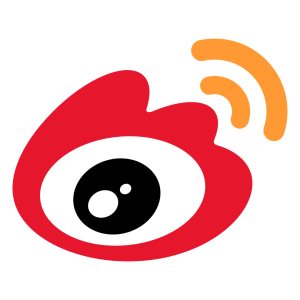
Founders: Wang Xing (王兴)
Often referred to as “Chinese Twitter,” Weibo is a microblogging platform where users share short updates, photos, and videos.
Weibo presents commercial opportunities as well. Influencer marketing, sponsored posts, and the “Weibo lottery,” in which followers can win rewards from companies, are all effective ways for businesses to expand and increase brand awareness.
It’s a hotbed for discussions, news sharing, and celebrity gossip. Brands can leverage Weibo to engage in real-time conversations, promote trending topics or hashtags, and build brand awareness through targeted advertising.
How businesses can use the platform:
Create engaging content that sparks conversation and encourages users to share and comment.
Run contests or giveaways to generate excitement and increase brand visibility.
Partner with Weibo influencers to promote your brand to their established audience.
16. QQ
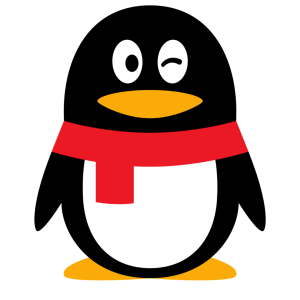
Founders: Ma Huateng (马化腾)
QQ is a messaging giant in China, offering instant messaging, online games, and social networking features.
Think of it as a combination of Facebook Messenger and a lite social media platform. Businesses can leverage QQ to connect with customers on a more personal level and provide customer support through the platform’s chat functionality.
How businesses can use the platform:
Create a dedicated QQ group for your brand to foster communication and build a community.
Offer customer service through QQ chat to address inquiries and build trust with potential customers.
Run targeted ads within the QQ platform to reach users based on demographics and interests.
17. Qzone

Founders: Ma Huateng (马化腾)
Qzone, literally “QQ zone,” is a social networking site integrated with QQ messenger. Users can share photos, videos, and blogs like Facebook profiles.
While not as widely used as QQ messenger itself, Qzone offers a space for businesses to showcase their brand personality and connect with users on a more personal level.
How businesses can use the platform:
Create a Qzone page to share visually engaging content that resonates with your target audience.
Run contests or polls to encourage user interaction and brand awareness.
Partner with QQ influencers who are also active on Qzone to leverage their reach and credibility.
18. Reddit

Founders: Steve Huffman, Alexis Ohanian, Aaron Swartz
Think of Reddit as a giant online forum with a strong community focus. Users (“Redditors”) can submit content (text posts, links, images, videos) and vote on it, with the most popular content rising to the top.
Reddit offers a distinctive combination of community and material, with over 2.8 million subreddits, or communities, covering any and all topics. Regardless of your industry—tech, fashion, gaming, or health—at least one subreddit is always engaged in discussions.
Discussions happen in subreddits, dedicated communities focused on specific topics. Brands can leverage Reddit to engage with niche audiences, participate in relevant conversations, and build brand loyalty through authentic interactions.
Every brand and company can engage their audience in one of the many niches available; all you have to do is identify the ones where your target market is active and jump in.
But take note: Reddit is a place where sincerity and real communication are highly valued. Consumers are generally not amenable to overt self-promotion, therefore marketing tricks are likely to be viewed with acute suspicion.
How businesses can use the platform:
Don’t just spam your products.
Actively participate in subreddits relevant to your industry by providing helpful and informative comments.
Run AMA (Ask Me Anything) sessions to connect with potential customers and answer their questions directly.
Partner with Reddit communities or influencers to create sponsored content that feels organic and relevant to the subreddit.
19. Discord

Founders: Jason Citron, Stanislav Vishnevsky
Originally created for gamers, Discord has evolved into a versatile chat platform with features like voice chat, video calls, and screen sharing.
Servers (similar to group chats) can be public or private, allowing for focused discussions and fostering a strong sense of community. Brands can leverage Discord to connect with passionate communities, offer customer support, and build brand loyalty through behind-the-scenes access.
How businesses can use the platform:
Create a branded Discord server to connect with your audience and offer a space for discussions and interaction.
Host live chats or AMAs with your team members to provide insights and build a personal connection.
Offer exclusive content or early access to products/services for active members of your Discord server.
But remember that ads are not allowed on Discord. Alternatively, companies can set up a server for their community and interact with users that way.
20. Twitch

Founders: Justin Kan, Emmett Shear
Twitch is the king of live streaming for gamers. It’s a platform where gamers broadcast their gameplay, interact with viewers in real-time, and create a community around shared interests.
In Q3 2022, Twitch users watched 5.71 billion hours of content.
While gaming is a major focus, Twitch has expanded to include creative content like art streams and live music performances. Brands can leverage Twitch to reach a highly engaged audience, showcase product integrations in a live setting, and partner with streamers to promote their brand in an authentic way.
How businesses can use the platform:
Sponsor popular streamers who align with your brand image to reach a relevant audience.
Run interactive ad campaigns that encourage viewers to participate in live streams.
Host your own Twitch streams to showcase your products or expertise in a fun and engaging way.
21. Tumblr

Founders: David Karp
Tumblr is a microblogging platform with a focus on short-form content – text posts, images, videos, and audio. Known for its creative and quirky user base, Tumblr allows for self-expression and exploration of diverse interests.
Brands can leverage Tumblr to target niche audiences, showcase their creative side, and build brand awareness through engaging content.
How businesses can use the platform:
Create a branded Tumblr page to share visually appealing content that resonates with your target audience.
Run contests or challenges that encourage user-generated content related to your brand.
Partner with relevant Tumblr blogs to promote your brand or products to their established audience.
22. Mastodon

Founders: Eugen Rochko, Christophe Wolinski
If you value privacy and control over your social media experience, Mastodon might be for you. Unlike centralized platforms where a single company controls the rules and user data, Mastodon is a decentralized social network.
It’s made up of a federation of independently run servers, each with its own focus and community guidelines. This allows users to choose a server that aligns with their values and interests.
How businesses can use the platform:
Mastodon’s decentralized nature makes it a less traditional space for brand building.
However, businesses catering to niche communities can find a home here.
You can create a server focused on your industry and foster discussions, share insights, and build relationships with potential customers who value privacy.
23. Bluesky

Founders: Jack Dorsey, Jay Graber
Instead of being a single platform, Bluesky is an ambitious project aiming to create a protocol for social media. Think of it as a set of rules and standards that different social media apps can choose to adopt.
This could lead to a more interoperable social media landscape, where users can follow each other and share content across different platforms, even if they’re not owned by the same company.
How businesses can use the platform:
Since Bluesky is still in development, it’s too early to say definitively how businesses can leverage it. However, the idea of an interoperable future opens doors for wider reach and more control over how your brand interacts with users across the social media spectrum.
24. Viber

Founders: Igor Magazinnik (CEO), Viber Media Inc.
While WhatsApp reigns supreme in many parts of the world, Viber is a messaging app that holds strong popularity in Eastern Europe and some other regions. It offers features like instant messaging, voice and video calls, and group chats, similar to its competitors.
How businesses can use the platform:
If your target audience is located in a region where Viber is dominant, consider incorporating it into your strategy.
You can create a community chat or channel to connect with customers, offer customer support, or run targeted promotions within the Viber platform.
25. Imo

Founder: Georges Harik
Similar to Viber, Imo is another messaging app with a strong presence in certain markets, particularly in developing countries and regions like Latin America, the Middle East, and Southeast Asia. It offers features for calls, texts, and video chats.
How businesses can use the platform:
As with Viber, Imo’s relevance depends on your target audience. If your ideal customer is located in a region where Imo is popular, explore using it for customer service, promotions, or community building through group chats.
Which social media platforms should you use for your brand in 2024?
Picking your brand’s perfect social media platforms depends on what you want to achieve. Here’s a quick guide:
Goals first:
Brand awareness? Go for Facebook, Instagram, or YouTube for broad reach.
Lead generation? Target LinkedIn or Twitter for professionals.
Fan base? Build a community on Discord or Threads.
Know your audience:
Age, interests, social media habits – all this matters!
Pick your platforms:
2-3 core platforms: Be consistent here with quality content.
1-2 extras: Explore platforms where your audience thrives.
Emerging options (optional): Consider new platforms like Mastodon, but prioritize based on resources and audience fit.
Remember: Great content, consistent posting, and data analysis are key. Focus on quality to grab attention. There’s no one-size-fits-all answer, so be strategic, experiment, and adapt based on your audience and goals.
How can Plan My Social help with social media management?
Plan My Social is a great social media management tool that can help you generate content, plan, schedule, and publish content consistently on all social media platforms.
You can also generate social media content using their AI-powered features.
Plan My Social can manage your social media profiles across various platforms, all under a single platform. This includes scheduling posts in advance.
It provides regular reports with data visualizations and analysis to clearly show your social media performance. Their data-driven approach helps you make informed decisions and adjust your strategy as needed.
By leveraging the expertise of a social media management company like Plan My Social, you can streamline your social media efforts and achieve better results on the platforms that matter most to your brand.
